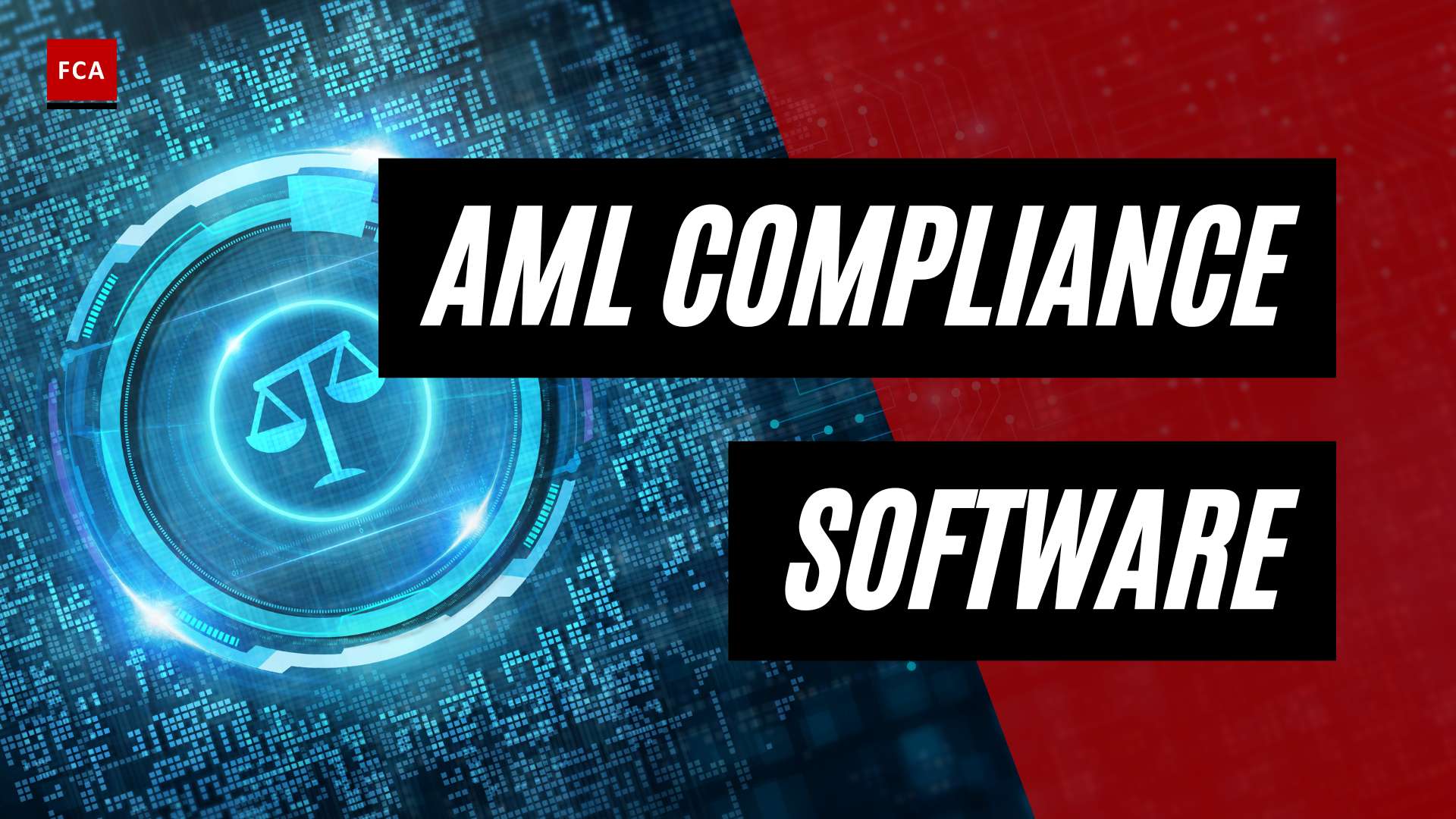The Importance of AML Compliance
In today’s global financial landscape, Anti-Money Laundering (AML) compliance has become increasingly crucial. AML regulations are designed to detect, prevent, and deter money laundering and the financing of illegal activities. Understanding these regulations and ensuring compliance is vital for financial institutions and businesses operating in various industries.
Understanding Anti-Money Laundering (AML) Regulations
AML regulations are a set of laws and regulations implemented by governments and regulatory bodies to combat money laundering and the financing of terrorism. They aim to safeguard the integrity of the financial system and protect it from illicit activities.
These regulations require financial institutions, such as banks, credit unions, and money service businesses, to implement robust AML compliance programs. These programs include customer due diligence (CDD), suspicious activity monitoring and reporting, risk assessments, and ongoing employee training.
The key objectives of AML regulations are to:
- Identify and verify the identity of customers to prevent anonymous transactions that could facilitate money laundering.
- Monitor and report suspicious activities to relevant authorities, such as suspicious activity reporting to help combat financial crimes.
- Conduct ongoing risk assessments to understand and mitigate potential money laundering risks.
- Comply with beneficial ownership regulations to ensure transparency in financial transactions.
To ensure compliance with AML regulations, businesses need to have a thorough understanding of these regulations and implement effective AML compliance programs.
Financial Privacy and AML Compliance
While financial privacy is important, it should not be used as a shield for illicit activities. AML compliance plays a crucial role in striking a balance between privacy and transparency in the financial sector.
By implementing AML compliance measures, businesses contribute to the overall security and stability of the financial system. These measures help detect and prevent money laundering, terrorist financing, and other financial crimes that can have severe consequences for economies and societies.
Financial institutions must strike a balance between protecting customer privacy and fulfilling their obligations to combat financial crimes. A robust AML compliance program ensures that customer information is handled securely and confidentially, while also complying with regulatory requirements.
By understanding the importance of AML compliance and the role it plays in maintaining financial integrity and security, businesses can take the necessary steps to implement effective AML compliance programs. This includes leveraging technology, such as AML compliance software, to streamline processes and enhance compliance efforts.
In the next sections, we will explore the challenges in AML compliance and the power of AML compliance software in revolutionizing and simplifying compliance processes.
Challenges in AML Compliance
Ensuring Anti-Money Laundering (AML) compliance is an ongoing effort for financial institutions and businesses operating in regulated industries. However, there are specific challenges they face in their pursuit of effective AML compliance. This section will explore two key challenges: manual processes and limitations, and the rising complexity of financial crimes.
Manual Processes and Limitations
Traditional AML compliance methods often rely on manual processes, which can be time-consuming, resource-intensive, and prone to errors. Manual processes involve manually reviewing and analyzing large volumes of data, which can be overwhelming and increase the risk of overlooking suspicious activities.
Moreover, manual processes limit the efficiency and scalability of AML compliance efforts. The increasing volume and complexity of financial transactions make it challenging for compliance teams to keep up with the evolving landscape of financial crimes. This manual approach can lead to delays in identifying and reporting suspicious activities, potentially exposing organizations to regulatory penalties.
To overcome these challenges, organizations are turning to technology solutions such as AML compliance software. These software tools automate various aspects of AML compliance, streamlining processes, reducing human error, and improving overall efficiency.
Rising Complexity of Financial Crimes
Financial crimes, including money laundering, terrorist financing, and fraud, are becoming increasingly complex. Criminals continually adapt their methods to exploit vulnerabilities in the financial system, making it challenging for organizations to detect and prevent illicit activities.
The rise of digital transactions, virtual currencies, and online platforms has further heightened the complexity of financial crimes. Criminals can exploit these channels to launder money, obfuscate the source of funds, and engage in illicit activities while remaining anonymous.
As financial crimes become more sophisticated, organizations must stay ahead of these evolving threats. AML compliance software plays a crucial role in this regard by leveraging advanced technologies such as artificial intelligence and machine learning to detect patterns and anomalies in financial data. These technologies enable organizations to identify suspicious activities more effectively and take proactive measures to mitigate risks.
By addressing the challenges of manual processes and limitations and staying ahead of the rising complexity of financial crimes, organizations can enhance their AML compliance efforts and better protect themselves against illicit activities. Implementing AML compliance software allows businesses to automate compliance processes, improve accuracy, and respond swiftly to potential risks. To learn more about the key features of AML compliance software, continue reading our section on Key Features of AML Compliance Software.
The Power of AML Compliance Software
As financial crimes become increasingly sophisticated, the importance of robust Anti-Money Laundering (AML) compliance measures cannot be overstated. To effectively combat money laundering and meet regulatory requirements, organizations are turning to AML compliance software. This section will explore what AML compliance software is and the benefits it offers.
What is AML Compliance Software?
AML compliance software refers to specialized software solutions designed to assist organizations in meeting their AML obligations. These software systems automate and streamline various AML processes, enabling financial institutions to efficiently detect and prevent money laundering activities.
AML compliance software incorporates advanced technologies, such as artificial intelligence (AI) and machine learning, to enhance the effectiveness and accuracy of AML efforts. These technologies enable the software to analyze vast amounts of data, identify patterns, and flag suspicious transactions or activities for further investigation.
Benefits of Using AML Compliance Software
Implementing AML compliance software offers numerous benefits for organizations striving to combat financial crimes and maintain regulatory compliance. Some of the key advantages include:
-
Enhanced Efficiency: AML compliance software automates manual processes, reducing the need for labor-intensive tasks. This enables organizations to handle a larger volume of transactions and alerts more efficiently, improving overall operational efficiency.
-
Improved Accuracy: By leveraging advanced technologies, AML compliance software minimizes the risk of errors and false positives. The software’s ability to analyze data and identify patterns significantly enhances the accuracy of detecting suspicious activities.
-
Time and Cost Savings: Automating AML processes with software reduces the time and effort required for manual reviews and investigations. This, in turn, contributes to cost savings by optimizing resource allocation and reducing labor-intensive tasks.
-
Enhanced Risk Management: AML compliance software provides organizations with comprehensive risk assessment capabilities. It allows for the identification and evaluation of potential risks associated with customers, transactions, and counterparties, enabling proactive risk management.
-
Compliance with AML Regulations: AML compliance software ensures adherence to regulatory requirements by providing robust monitoring and reporting capabilities. It helps organizations stay up to date with evolving AML regulations, such as AML regulations and beneficial ownership regulations.
-
Audit Trail and Documentation: AML compliance software maintains detailed audit trails and documentation, which can be invaluable during regulatory audits and investigations. It facilitates transparency and provides a comprehensive record of AML activities.
The adoption of AML compliance software empowers organizations with the tools and capabilities necessary to effectively combat money laundering and meet regulatory expectations. By automating processes, enhancing accuracy, and improving efficiency, organizations can focus their resources on investigating and mitigating genuine risks. It is important to note that while AML compliance software is a powerful tool, it should always be utilized in conjunction with a comprehensive AML compliance program and the expertise of an experienced AML compliance officer.
In the next section, we will delve into the specific key features of AML compliance software, including customer due diligence, transaction monitoring, and risk assessment and reporting.
Key Features of AML Compliance Software
When it comes to streamlining Anti-Money Laundering (AML) compliance processes, AML compliance software plays a vital role. This software is designed to assist organizations in meeting their regulatory obligations and combating financial crimes effectively. Let’s explore some key features of AML compliance software:
Customer Due Diligence (CDD)
Customer Due Diligence (CDD) is a crucial component of AML compliance. AML compliance software enables organizations to conduct thorough background checks on customers and assess their risk profiles. It helps in verifying customer identities, conducting sanctions and politically exposed persons (PEP) screenings, and monitoring beneficial ownership information. By automating CDD processes, AML compliance software enhances efficiency and accuracy while ensuring compliance with AML regulations.
Transaction Monitoring
Transaction monitoring is another essential feature of AML compliance software. It involves the analysis and tracking of financial transactions to identify suspicious activities. AML compliance software utilizes advanced algorithms and rule-based systems to monitor transactions in real-time. It can detect patterns, anomalies, and red flags that may indicate potential money laundering or terrorist financing activities. By generating alerts for further investigation, this feature helps organizations comply with reporting requirements and suspicious activity reporting obligations.
Risk Assessment and Reporting
AML compliance software offers robust risk assessment and reporting capabilities. It enables organizations to assess the risk associated with customers, transactions, and other relevant factors. By considering parameters such as geographic risk, business sector risk, and customer behavior patterns, the software helps in assigning risk ratings to customers and transactions. This risk-based approach allows organizations to allocate resources efficiently and focus their efforts on high-risk areas.
Furthermore, AML compliance software generates comprehensive reports that consolidate all relevant information for regulatory reporting purposes. These reports include transaction summaries, risk assessments, and other required documentation. By automating the reporting process, organizations can save time, reduce human error, and ensure compliance with regulatory requirements.
By leveraging the key features of AML compliance software, organizations can enhance their anti-money laundering compliance efforts and mitigate the risks associated with financial crimes. However, it’s important to note that the effectiveness of the software depends on proper implementation, integration with existing systems, and appropriate training and support for staff. Organizations must carefully consider these factors when implementing AML compliance software to maximize its benefits. To learn more about implementing an effective AML compliance program, refer to our article on AML compliance checklist.
Implementing AML Compliance Software
Implementing AML compliance software is a crucial step in revolutionizing the way organizations tackle anti-money laundering (AML) compliance. To ensure a successful implementation, there are several considerations to keep in mind, including integration with existing systems, training and support for staff, and overall implementation strategy.
Considerations for Implementation
When implementing AML compliance software, it is important to carefully consider various factors to ensure a smooth transition and effective utilization of the software. Here are some key considerations:
-
Assessing Organizational Needs: Before selecting and implementing AML compliance software, organizations should conduct a thorough assessment of their needs. This involves identifying specific AML compliance requirements, understanding the scope of operations, and considering any unique challenges or regulatory obligations. This assessment will help in selecting the most suitable software solution that aligns with the organization’s goals and objectives.
-
Vendor Evaluation: It is crucial to choose a reputable vendor that offers a comprehensive AML compliance software solution. Organizations should evaluate vendors based on factors such as system functionality, scalability, flexibility, data security measures, reputation, and customer support. Engaging with vendors through demonstrations and conducting due diligence will help ensure that the software meets the organization’s specific requirements.
Integration with Existing Systems
Integration with existing systems is another vital consideration when implementing AML compliance software. Seamless integration allows for effective data sharing, reduces duplication of efforts, and enhances overall operational efficiency. Organizations should assess the compatibility of the AML compliance software with existing systems, such as customer relationship management (CRM) platforms, transaction monitoring systems, and case management systems. This integration facilitates the flow of information and enables a holistic approach to AML compliance.
Training and Support for Staff
Proper training and support for staff members are essential for successful implementation and utilization of AML compliance software. Organizations should provide comprehensive training programs to educate employees on the features and functionalities of the software, as well as the overall AML compliance framework. This training should cover topics such as customer due diligence (CDD), transaction monitoring, risk assessment, and reporting. Ongoing support should also be available to address any questions or issues that may arise during the implementation process.
By considering these implementation factors, organizations can ensure a smooth transition to AML compliance software. Effective integration with existing systems and comprehensive training for staff members will maximize the benefits of the software and enhance the organization’s overall AML compliance efforts.
For more information on AML compliance and related topics, refer to our articles on suspicious activity reporting, anti-money laundering compliance, and customer due diligence.









